Big data has shaped how industries manage, analyze, and leverage relevant information across various industries, as evidenced by 24% of companies adopting the solution. Healthcare is one industry where data analysis has become especially prominent.
Health professionals deal with massive amounts of data, whether for patient information or research and development. This makes strong data processing and management tools a necessity for health professionals. As a result, the global big data in the healthcare market was valued at $67 billion in 2023 and is expected to increase at a CAGR of more than 19% during the forecast period 2023-2035.
In this article, you’ll understand big data, how it benefits health care, and the relevant statistics behind it.
Editor’s Choice
- Big data is projected to reach $105.73 Billion by 2031.
- The US saves $300 billion annually using big data analytics.
- Clinical analytics is projected to reach $11.35 billion by 2025.
- From 2024 to 2030, big data in financial analytics is projected to have a CAGR of 21.1%.
- The usage of Machine Learning (ML) is expected to grow by 10.6% in hospitals and clinics.
- North America dominates the big data in the healthcare industry with a 34.7% revenue.
- Big data storage in the healthcare industry will reach 175 Zb by 2025.
Big Data in Healthcare: The Increasing Demand for Population Health Analytics
According to Straits Research, big data solutions in health management are projected to reach $105.73 billion by 2031. The increased data production in the industry is due to technological advancement requiring better health administration and optimization to improve patient outcomes and decrease healthcare costs.
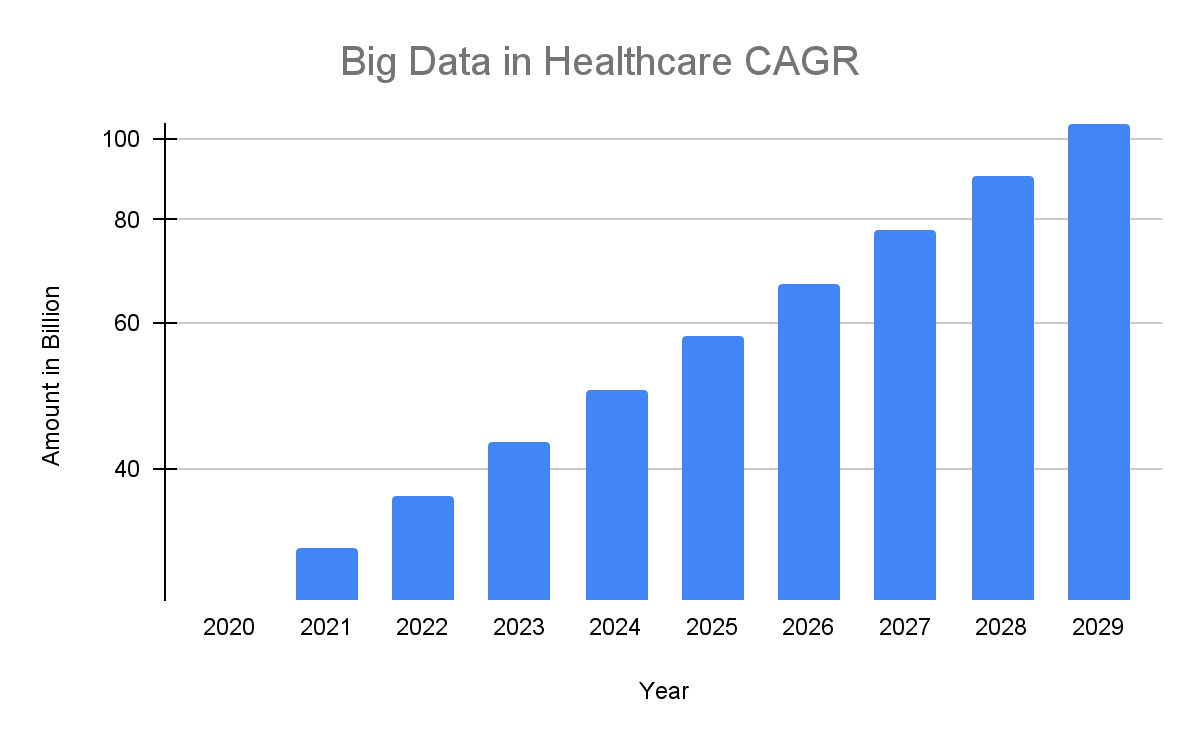
Technological advancements have increased the demand for healthcare management quality and patient care improvement. Several factors have been influencing this increasing demand. Based on the findings of 25 Articles, here are the top 9 factors:
- Patient Management
- Disease Tracking
- Quality Decision Making
- Medicine Tracking
- Healthcare Efficiency
- Financial Management
- Data Management
- Data Visualization
- Securing Patient Data
Among the nine discovered factors, patient care management was revealed as the most recurring factor prompting healthcare institutions to leverage big data to improve the quality of care.
Although big data is prominent, using these essential medical data raises concerns about healthcare cybersecurity and privacy. This also triggers the issue of governance and the authorities responsible for managing and implementing big data among healthcare organizations. To better understand the big data framework, read the following section.
The 6 V’s of Big Data in Healthcare: Understanding Its Nature and Framework
The 6 V’s of Big Data in Healthcare makeup a framework that characterizes fundamental properties that must be considered when managing large mounts of data. They are:
- Volume: vast amounts of data collected and generated from different reliable sources, both structured and unstructured.
- Velocity: the speed at which the data is collected and generated before it is processed to manage and be effective.
- Variety: refers to the different healthcare formats and data types integrated. This includes images, text, videos, and sensor data.
- Variability: the inconsistency of data wherein interpretation can vary depending on its context.
- Veracity: the quality and authenticity of the data since it comes from different sources. Careful verification and validation is needed.
- Value: the insights derived from data analysis that are attributed to the dataset. The goal is to discover relevant information that can drive innovation.
Now that you have understood big data’s framework in healthcare, read on and learn the relevant statistics of big data by its segmentation.
Breaking Down the Statistics on Big Data in Healthcare: By Segmentation
The impact of big data in the healthcare industry is vast and has become prominent. According to an analysis conducted by Allied Market Research in 2019, the market value of big data in North America is expected to reach $34.16 billion by 2025, four times higher than its 2017 data, which is $9.36 billion.
Big data have revamped the healthcare industry. Among the things that have contributed to its popularity are the sources of big data, including electronic health records (EHR), electronic medical records (EMRS), and data produced by digital health tools like
- wearable medical devices
- health applications
To better break down relevant data and statistics of big data, information is segmented by application, by the end-user, and by region. This is shown in the table below.
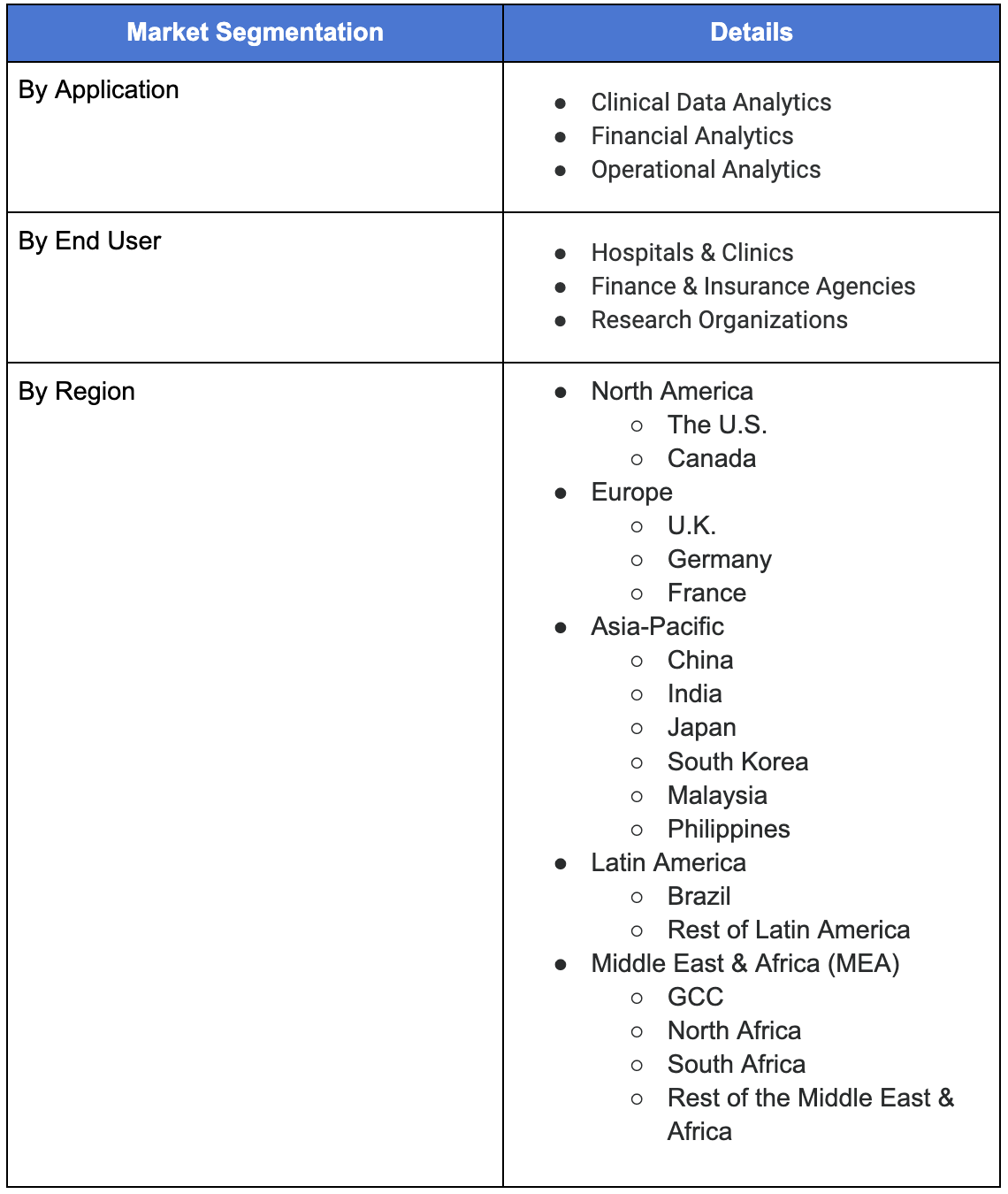
Segmentation helps break down meaningful data into three aspects, providing a more detailed insight into the types of patterns in the database. Read on and learn more about the relevant statistics of big data by segmentation in the following section.
1. Big Data Analytics in the Healthcare Industry, By Application: Clinical Analytics Leading Cost-saving Margins with Big Data Solutions
Big data by application can be divided into three analytics: Clinical, Financial, and Operational. Read on and learn the relevant statistics of big data by application.
Clinical Analytics: $300 Billion Can be Save by the US Annually Using Big Data Analytics
(McKinsey)
According to McKinsey, it is estimated that big data analytics in healthcare can save $300 billion annually in the US, which is 8% of the national healthcare expenditures. This can be attributed to the following:
- better diagnostic
- reduce fraud
- improved patient outcomes
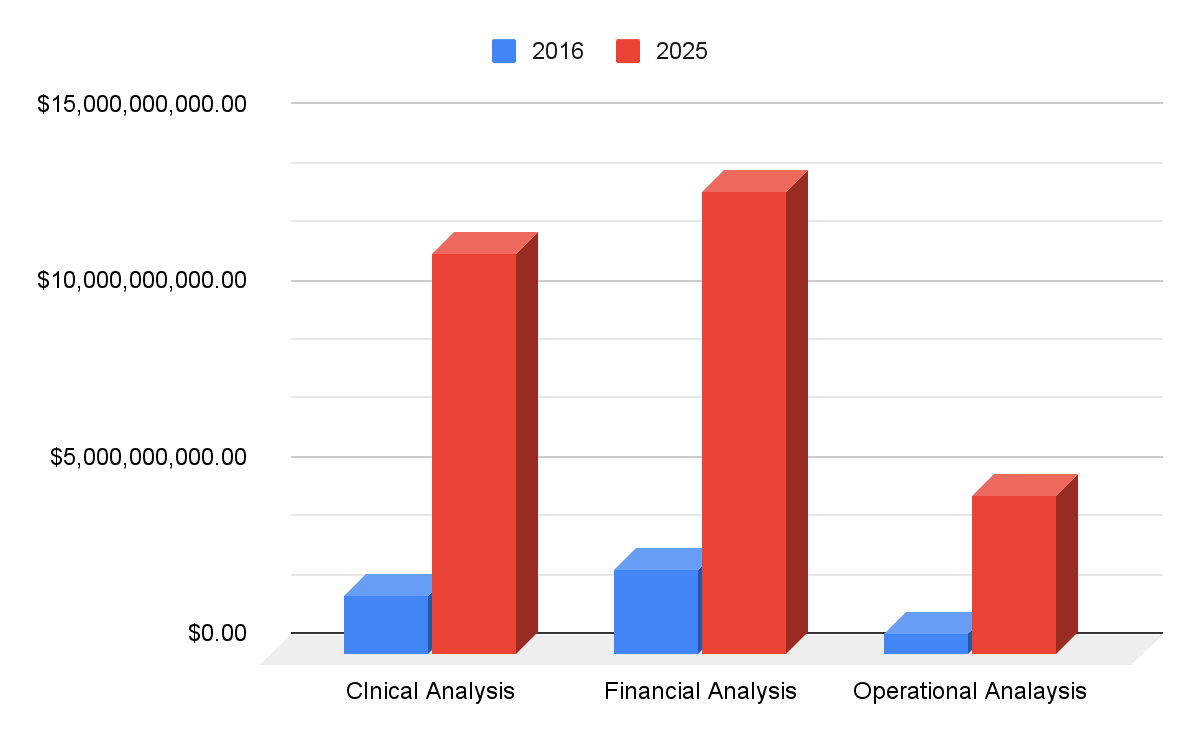
According to Statista’s 2016 study, the global big data analytics market for clinical analysis is projected to reach $11.35 billion by 2025. Several key factors contribute to this number, including:
- increase in supportive regulation
- pressure to reduce costs
- demand for new treatment
Financial Analytics: Big Data CAGR of 21.1% from 2024 to 2030
(Grand View Research)
Global financial healthcare analytics was expected to account for having the largest share of the healthcare analysis in 2023. Significant factors for this increase in market growth include
- adoption of electronic healthcare records
- rising focus on personalized medicine-based analytics need to improve patient outcomes
Recent data by Grand View Research, Inc. shows it is expected to reach $167.0 billion in 2030, increasing at a CAGR of 21.1% from 2024 to 2030.
Operational Analytics: 41% of Healthcare Professionals Implement Big Data
(Accenture)
One of the contributors to improving the quality and accuracy of clinical decisions and processing a large number of health records operational analytics is big data, which is newly integrated into the metaverse.
With emerging technologies like the metaverse, it was found that 41% of healthcare professionals have been implementing big data, and 81% anticipate the metaverse to impact the healthcare industry positively.
Did You Know?
Leading GCC healthcare professionals are already exploring metaverse use cases, using tools such as 3D models of a patient’s body to help surgeons plan and conduct operations and implementing VR environments for psychiatric therapy.
2. Big Data Analytics in the Healthcare Industry By End-User
For end users, big data can be put into three categories – medical research analysis, hospitals and clinics, and medical finances and insurance agencies. Read on and learn the relevant statistics of big data in these sectors.
Medical Research Organizations Discovered 33 Forms of Tumors by Using Big Data
(National Cancer Institute, Forbes )
The use of big data in medical research has paved the way for organizations to identify new biomarkers for diseases, enabling more targeted and effective treatment approaches.
One example of big data’s relevance in medical research is the Cancer Genome Atlas Project, where genomic data from 11,000 cancer patients were gathered. The study found 33 types of tumors and 10 cancers, allowing researchers to develop effective drugs and treatments.
Did You Know?
Pharmaceutical companies increasingly use big data and predictive Analysis to improve their research and increase their drug development by 30% to meet consumer needs.
Hospitals & Clinics using Machine learning are expected to grow by 10.6%
(Straits Research, Healthit)
Hospitals and clinics use advanced analytics like machine learning to find relevant data. By 2022-2039, the hospital segment is expected to grow by 10.6% due to life-threatening diseases like cancer and the COVID-19 virus.
| Year | Hospitals | Office-based Physicians |
|---|---|---|
| 2011 | 28% | 34% |
| 2012 | 44% | 40% |
| 2013 | 59% | 48% |
| 2014 | 97% | 74% |
| 2015 | 96% | 78% |
| 2016 | 96% | 78% |
| 2017 | 96% | 80% |
| 2018 | 96% | 79% |
| 2019 | 72% | N/A |
| 2021 | 96% | 78% |
In 2021, it was found that 78% of office-based physicians and 96% of non-federal acute hospitals have integrated a certified EHR. It has made substantial 10-year progress compared to 2011 data, with only 28% of hospitals and 34% of physicians adopting EHR.
Medical Finance & Insurance Agencies Achieve a 5% Reduction in Claim Cost Through Customized Insurance Plans.
(International Data Corporation, SCIRP)
The use of big data in health insurance companies creates more customized insurance plans that better meet the needs of their clients. This approach can also help achieve a 5% reduction in claims costs, improve CRM, and lessen fraud cases.
Healthcare fraud detection using big data analytics has an accuracy rate of over 95%. Big data plays a significant role in fraud detection, identifying suspicious patterns for quicker investigations and reduced losses.
3. Big Data Analytics in the Healthcare Industry, by Region: North America Dominated the Market With 34.7% Revenue.
(Grand View Research)
The global big data market is segmented by region: North America, Asia Pacific, Europe, Latin America, Africa, and the Middle East.
The North American region has dominated the healthcare big data revenue of 34.7% in 2022. The developments in IoT, rising demands for analytical models on patients, and utilization of emerging technologies such as machine learning and AI are responsible for this market growth.
Asia Pacific witnessed a significant CAGR of 34.2% during the forecast period. This data is expected to grow due to the growing adoption of digital healthcare solutions and government initiatives to promote healthcare IT.
Big Data Analytics Predictions: Predictive Analysis is expected to reach a CAGR of 23.2%.
The market size for predictive analysis of big data was $5.7 billion in 2018 and is expected to reach a CAGR of 23.2% in the forecast period. It allows organizations to raise awareness and provide immediate solutions in healthcare.
Healthcare professionals worldwide use data analytics to transform fragmented, accessible data into new clinical evidence and operational insights. Here are three examples showing the transformative potential of big data analytics in healthcare in the coming years.
Prediction #1: Early Disease Detection and Faster Drug Development By Machine Learning and AI.
Healthcare organizations can leverage AI and Machine learning, and advanced analytics will have more breakthroughs in the coming years. In 2021, over 100 drug and biological applications were submitted to the FDA using these two technologies.
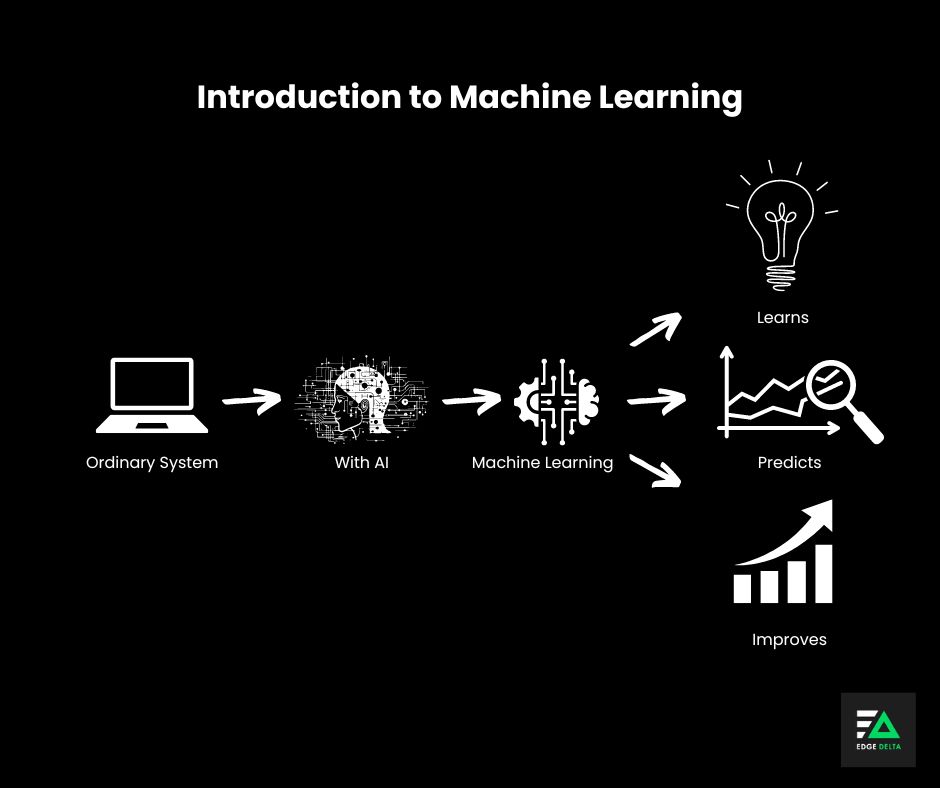
Machine learning intelligence lies in its ability to gather valuable insights and patterns from large and complex healthcare datasets. This further facilitates the following:
- improved decision making
- predictive modeling
- personalized patient care
Prediction #2: Big Data Key Players: Amazon Dominated With $1.77 Trillion Revenue.
The big data market is characterized by intense competition and is projected to increase in the coming years. The main priority of these key players is developing new products and establishing collaborations.
With healthcare a priority, big companies have a significant market share of big data. Still, Amazon has dominated the market with $1.77 trillion in revenue in 2022. Some of the key players in global big data analytics are the following companies:
- Amazon Web Services Inc.
- International Business Machines Corporation
- Looker Data Sciences, Inc.
- Mu Sigma
- Oracle Corporation
- SAP SE
- Sisense Inc.
- Tableau Software LLC.
- ThoughtSpot Inc.
- Zoho Corporation Pvt. Ltd.
Prediction #3: Storage Big Data Expected to Reach 175 Zb by 2025.
The storage of big data in the whole world is increasing rapidly. According to IDC, big data will grow from 33 ZB in 2018 to 175 ZB by 2025, with a compound annual growth of 61%.
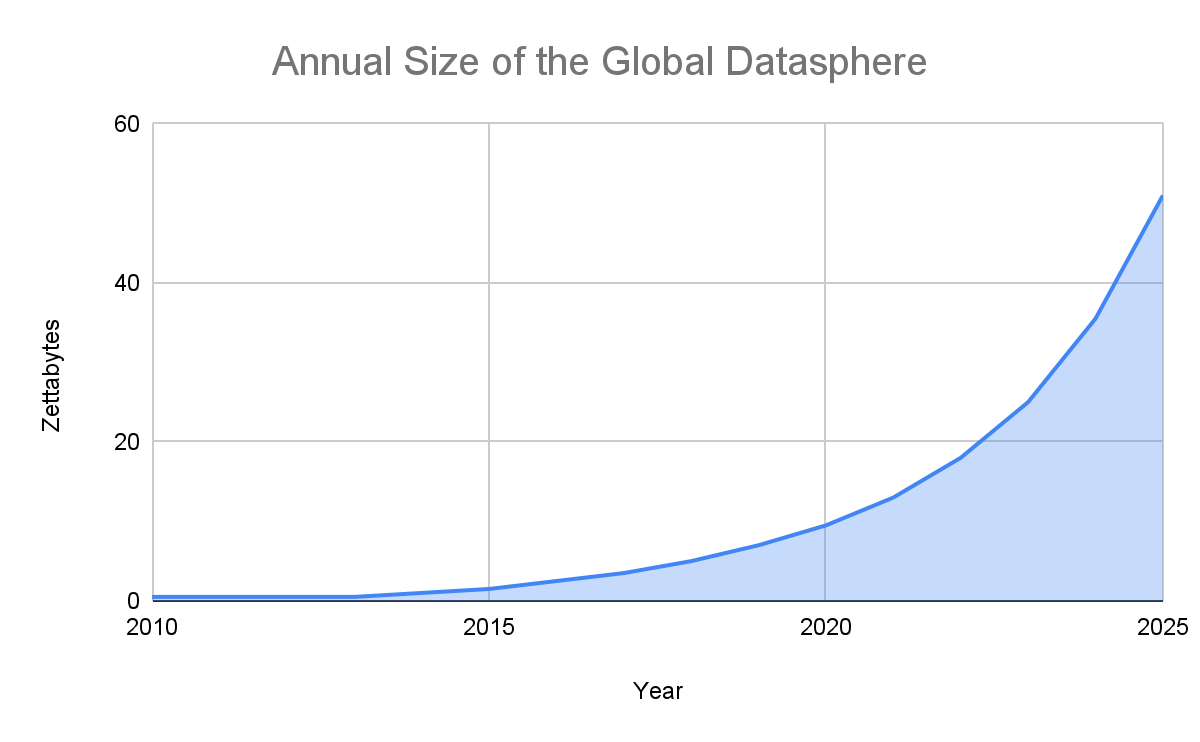
Several mind-opening findings were also revealed, including the following data:
- 42 ZB will be shipped in the storage industry over the next seven years.
- IoT devices will have 90ZB data by 2025.
- In 2025, 49% of data will be stored in public cloud environments.
- 30% of the data generated will be consumable in real time by 2025.
Bottom Line
Big data analytics in healthcare has proven effective and is already helping medical professionals test new drugs, diagnose diseases more accurately, minimize hospital readmission rates, and deliver superior patient care.
With the surging availability of machine learning, medical imagery, and biosignal data, more end users will benefit, and the use cases of big data analytics will grow and improve in the coming years.
FAQs on Big Data in Healthcare
What are the limitations of big data analytics in healthcare?
Big data challenges in healthcare are data security, cybersecurity breaches, malware, phishing attacks, and HIPAA data confidentiality and vulnerability.
Does big data analytics solve any problem?
Yes, big data analytics in healthcare can solve problems, such as solid knowledge of the emerging trends and technologies used to cure diseases.
Which countries are expected to grow significantly in big data analytics in the healthcare market?
China and India, which have an emerging economy, are expected to see significant growth in big data analytics due to rising healthcare expenditures and government initiatives.
What is the focus of big data analytics in healthcare?
Big data in healthcare focuses on analyzing, deploying, and applying new and emerging technologies that can help improve the healthcare industry.
Sources:
- Roots Analysis
- Straits Research
- National Library of Medicine
- Research Gate
- Illinois Touro
- Coursera
- Google Scholar
- Statista
- Meticulous Research
- Grand View Research
- Accenture
- National Cancer Institute
- Forbes
- Healthit
- International Data Corporation
- SCIRP
- Grand View Research
- Million Insights
- Akkio
- Innovature
- Datanami






